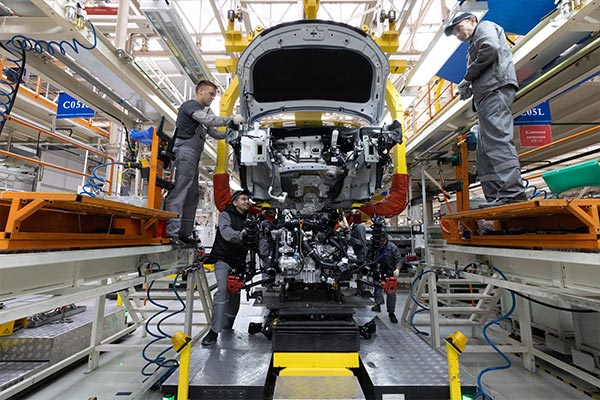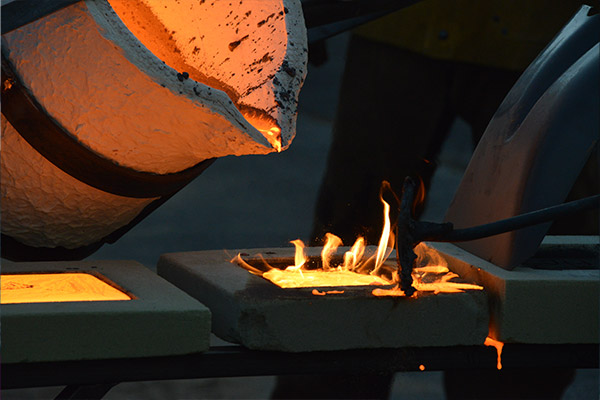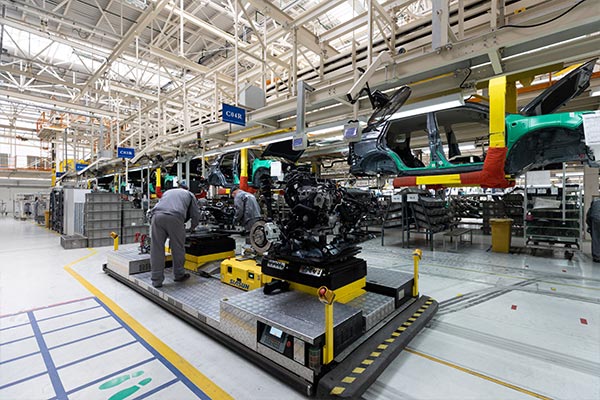Welcome to My Blog! 🌟
Before we dive into the content, I’d love for you to join me on my social media platforms. It’s where I share more insights, engage with our vibrant community, and post regular updates. Here’s how you can stay connected:
📘 Facebook: Connect with me on Facebook
Now, let’s embark on this journey together. I hope you find the content here insightful, engaging, and most importantly, valuable. Let’s explore, learn, and grow together! 🚀
Table of Contents
Introduction
Automotive steel plays a pivotal role in the global automotive industry. It is the backbone of vehicle construction, offering a combination of strength, durability, and cost – effectiveness. As the automotive market continues to expand globally, with buyers from different corners of the world seeking reliable and high – performance vehicles, understanding the various types of automotive steel is essential. This blog aims to introduce you to six must – know automotive steel types, their applications in different vehicle components, and provide real – world examples from global automotive manufacturers. By the end of this article, you’ll have a comprehensive understanding of the steel that goes into making your dream car.
High – Strength Low – Alloy (HSLA) Steel
What is HSLA Steel?
High – Strength Low – Alloy (HSLA) steel is a type of steel that contains small amounts of alloying elements such as copper, nickel, vanadium, and niobium. These elements are added in relatively low quantities but significantly enhance the strength and other mechanical properties of the steel. HSLA steel has a high strength – to – weight ratio, which is a crucial factor in automotive design.
Applications in Vehicles

HSLA steel is commonly used in automotive frames and chassis components. For example, in Ford F – Series trucks, one of the best – selling vehicles in North America, HSLA steel is used in the frame construction. The frame needs to be strong enough to support the weight of the vehicle, the payload, and withstand various road forces. HSLA steel provides the necessary strength while keeping the weight relatively low, which improves fuel efficiency. It is also used in suspension components like control arms, where it can handle the dynamic loads and stresses during vehicle operation.
Global Usage
Globally, Toyota also uses HSLA steel in many of its models. In the Toyota Camry, a popular mid – size sedan, HSLA steel is used in critical structural parts. This helps in meeting safety standards while also ensuring the vehicle’s long – term durability. The use of HSLA steel in these global automotive giants shows its widespread acceptance and effectiveness in vehicle manufacturing.
Dual – Phase (DP) Steel
.jpg)
Characteristics of DP Steel
Dual – Phase (DP) steel consists of a ferrite matrix with martensite islands. This unique microstructure gives DP steel a combination of high strength and good formability. It has a high initial work – hardening rate, which means it can resist deformation during the stamping process and still maintain its strength.
Automotive Applications
DP steel is often used in automotive body panels. For instance, in the Volkswagen Golf, a well – known compact car, DP steel is used in parts like the door inner panels. The high formability allows for complex shapes to be created during the manufacturing process, while the strength ensures that the panels can withstand minor impacts and maintain their integrity. It is also used in bumper reinforcements. Bumpers need to absorb energy during a collision, and DP steel’s properties make it an ideal choice for this application.
Global Adoption
In Asia, Hyundai uses DP steel in many of its vehicles. The Hyundai Sonata, a mid – size sedan, benefits from the use of DP steel in its body structure. This enhances the vehicle’s safety performance and also contributes to its overall quality and longevity.
Transformation – Induced Plasticity (TRIP) Steel

Understanding TRIP Steel
Transformation – Induced Plasticity (TRIP) steel is a type of advanced high – strength steel. It contains retained austenite, which transforms into martensite under stress. This transformation provides additional plasticity and energy absorption capacity.
Vehicle Applications
TRIP steel is used in areas where high energy absorption is required, such as in automotive crash boxes. Crash boxes are designed to absorb the energy of a collision and protect the vehicle’s occupants. In the Mercedes – Benz S – Class, a luxury sedan known for its high – end safety features, TRIP steel is used in the crash – relevant parts. It is also used in some reinforcement parts of the vehicle body, where it can help in distributing the crash forces evenly.
Global Use
In the global market, BMW also incorporates TRIP steel in its vehicles. The BMW 3 Series, a popular sports sedan, uses TRIP steel in strategic locations to improve its crashworthiness. This shows that TRIP steel is an important material for high – end and safety – conscious automotive manufacturers.
Martensitic Steel

Properties of Martensitic Steel
Martensitic steel is extremely hard and strong due to its martensitic microstructure. It is formed by rapid quenching of austenite. However, it has relatively low ductility compared to some other automotive steels.
Automotive Uses
Martensitic steel is mainly used in applications where high strength is the primary requirement, such as in seat belt anchorages. In the Nissan Altima, a mid – size sedan, martensitic steel is used to ensure that the seat belts can hold the occupants firmly in place during a collision. It is also used in some high – stress fasteners and brackets in the engine compartment, where it can withstand the high forces and vibrations.
Global Examples
General Motors uses martensitic steel in many of its vehicles, including the Chevrolet Silverado, a full – size pickup truck. The use of martensitic steel in these critical components helps in meeting the strict safety and performance standards set by global regulatory bodies.
Boron Steel

What is Boron Steel?
Boron steel is a type of high – strength steel that contains boron as an alloying element. Boron significantly increases the hardenability of the steel, allowing it to achieve high strength after heat treatment.
Applications in Cars
Boron steel is widely used in automotive safety cages. In the Volvo XC90, a luxury SUV known for its safety features, boron steel is used in the construction of the safety cage. The safety cage is designed to protect the occupants in the event of a crash by maintaining the integrity of the passenger compartment. It is also used in some reinforcement parts of the doors to prevent intrusion during a side – impact collision.
Global Presence
Tesla also uses boron steel in its vehicles. In the Tesla Model 3, a popular electric sedan, boron steel is used in key structural areas. This helps in providing a high level of safety while also taking advantage of the steel’s strength – to – weight ratio, which is important for electric vehicles to maximize their range.
Advanced High – Strength Steel (AHSS)
Overview of AHSS
Advanced High – Strength Steel (AHSS) is a broad category that includes various types of high – strength steels, such as those mentioned above (DP, TRIP, etc.). AHSS offers a combination of high strength, good formability, and excellent energy absorption capabilities.
Automotive Applications
AHSS is used in a wide range of automotive components. It can be found in the body – in – white (BIW) of vehicles, which is the basic structure of the vehicle before the addition of the engine, interior, and other components. In the Honda Civic, a compact car with a global presence, AHSS is used in the BIW to improve the vehicle’s overall strength and safety. It is also used in some suspension and steering components to handle the dynamic loads during vehicle operation.
Global Usage
Renault, a well – known European automotive manufacturer, uses AHSS in many of its models. The Renault Clio, a popular supermini, benefits from the use of AHSS in its body structure, which enhances its safety and performance.
Comparison Table of Automotive Steel Types
| Steel Type | Strength | Formability | Energy Absorption | Common Applications | Global Manufacturer Examples |
|---|---|---|---|---|---|
| HSLA Steel | High | Moderate | Moderate | Frames, Chassis, Suspension | Ford, Toyota |
| DP Steel | High | Good | Good | Body Panels, Bumper Reinforcements | Volkswagen, Hyundai |
| TRIP Steel | High | Good | High | Crash Boxes, Body Reinforcements | Mercedes – Benz, BMW |
| Martensitic Steel | Very High | Low | Low | Seat Belt Anchorages, Engine Fasteners | Nissan, General Motors |
| Boron Steel | High | Moderate | Good | Safety Cages, Door Reinforcements | Volvo, Tesla |
| AHSS | High | Good | Good | Body – in – White, Suspension Components | Honda, Renault |
Conclusion
In conclusion, the six types of automotive steel – High – Strength Low – Alloy (HSLA), Dual – Phase (DP), Transformation – Induced Plasticity (TRIP), Martensitic, Boron, and Advanced High – Strength Steel (AHSS) – each play a crucial role in the automotive industry. These steels are carefully selected based on their properties to meet the specific requirements of different vehicle components.
From the frames and chassis to the safety – critical parts, automotive steel ensures the safety, performance, and durability of vehicles. Global automotive manufacturers, such as Ford, Toyota, Mercedes – Benz, and Tesla, rely on these steel types to produce high – quality vehicles that meet the needs of buyers around the world. As the automotive industry continues to evolve, with a focus on safety, fuel efficiency, and sustainability, the importance of these automotive steel types will only increase.
FAQ
Q1: Why is automotive steel important?
Automotive steel is important because it provides the necessary strength and durability for vehicle construction. It ensures the safety of the occupants by withstanding various forces during normal operation and in the event of a crash. Additionally, different types of automotive steel can be used to optimize the weight of the vehicle, which improves fuel efficiency.
Q2: How do I know which type of automotive steel is used in my car?
It can be difficult to determine the exact type of steel used in your car without detailed technical information from the manufacturer. However, you can refer to the vehicle’s safety ratings and specifications. Some manufacturers may also provide information about the use of high – strength steels in their marketing materials.
Q3: Are these automotive steel types environmentally friendly?
Many automotive steel types are recyclable, which makes them relatively environmentally friendly. For example, steel can be recycled multiple times without losing its properties. Additionally, the use of high – strength steels can reduce the weight of vehicles, which in turn reduces fuel consumption and greenhouse gas emissions.
Q4: Can these steel types be used in electric vehicles?
Yes, these steel types are widely used in electric vehicles. Electric vehicles also require strong and durable structures to ensure safety and performance. The strength – to – weight ratio of these steels is particularly important for electric vehicles to maximize their range. For example, Tesla uses boron steel in its vehicles, and other types of AHSS are also used in various electric vehicle models.

